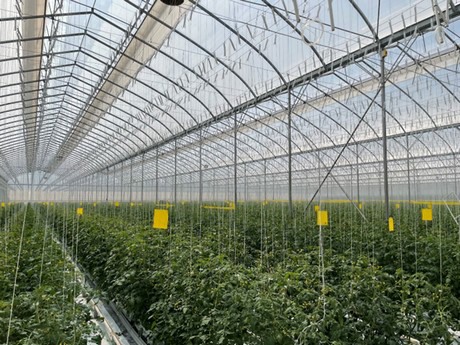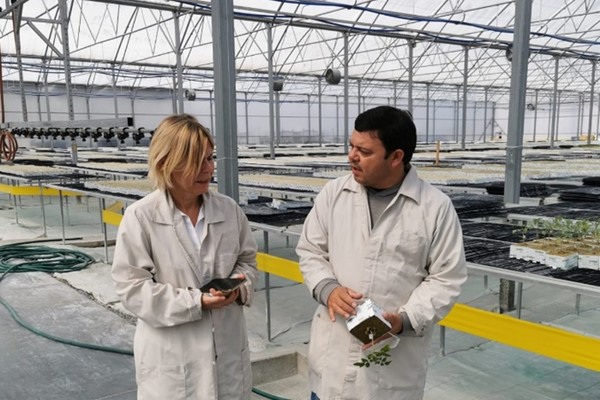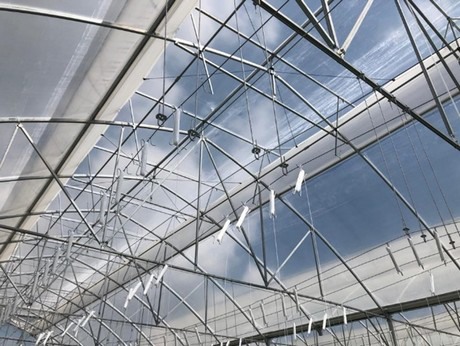In warm climates, maintaining ventilation and comfortable conditions in greenhouses is crucial, making pest control management a consistently important issue.
Climate change and rising temperatures, particularly in warm winters, contribute to an increased reproduction rate and larger sizes of insects. Human intervention in crop cultivation, such as restricted food sources for insects in protected areas, monoculture cultivation, and reduced biodiversity, has made insects more aggressive. Often, pesticides prove ineffective, with shorter lists and stronger insect resistance.

In recent years, geopolitical challenges have posed new obstacles for producers. Escalating energy costs not only raises production expenses but also limits resources for technological investments. Some crops, like tomatoes, face the added threat of new viruses such as the Tomato brown rugose fruit virus (ToBRFV), devastating entire productions. Although new varieties are emerging, growers need time to comprehend growing practices, quality, and crop characteristics.
During recent visits to growers and greenhouse constructors, Arrigoni sought to understand the challenges they've faced in recent years and their current requirements for insect protection.
"Maintaining a high level of insect control is always a priority. Adequate airflow is essential to reduce temperature and humidity levels. We also need screens with robust mechanical resistance capable of enduring the stress of frequent window openings and closings, sometimes up to 30 times a day for at least 3 years. Changing screens within one productive cycle poses significant challenges, not only in terms of screen costs and installation but also in ensuring a secure production."

Many encountered issues like screen tearing and opening after 1 or 2 years of use. Some installers suggest that perhaps there's an overemphasis on air permeability, leading to weaker screens. "Let's reinforce screen resistance, enabling larger windows."
Considering these challenges, Arrigoni's R&D team introduced a new concept in insect protection: optimal balance between insect protection, air permeability, and mechanical resistance.
To support this concept, we developed a special yarn with advanced characteristics—Yarn Arlene—after years of research on different recipes, extrusion methods, and laboratory and greenhouse testing.
We tested yarn diameters ranging from 0.17 to 0.15mm and even lower. Test results consistently showed that a diameter of 0.15mm or lower significantly reduced resistance levels and increased sensitivity to abrasion. Aging tests in QUV climate conditions revealed lower UV resistance compared to 0.17mm yarn with the same level of UV stabilization.
Arlene 0.17mm possessed all the necessary qualities: good mechanical resistance, high ventilation, and effective insect control. Thus, the new BioRete Air Plusrange was born.
BioRete Air Plus comprises eco-friendly insect screens that address pest challenges, providing a secure barrier, optimal air flow, and maintaining adequate light conditions for crops. This diverse range, with multiple hole size choices, enables producers to target specific insect pests while ensuring good ventilation and mechanical resistance.

All BioRete Air Plus screens undergo thorough testing in both laboratory and field settings, both internally and in independent laboratories. Tailored solutions are available based on the customers' needs. In areas with lower insect pressure, producers can choose more open screens with higher ventilation and lower protection levels.
For instance, the table below illustrates the efficiency of various anti-thrips screens in controlling the smallest insect pest, F. occidentalis, as tested by Agrin, an agricultural innovation center. Each type of net was tested with 100 adult specimens of F. occidentalis, totaling 400 thrips.
One constant factor across all BioRete screens is their high mechanical resistance and long life.
Choosing high-quality insect screens is pivotal in determining production outcomes, operational practices, and investment costs. BioRete Air Plus has become a reliable partner for many producers worldwide in the fight against insect pests, delivering excellent results. The new Arlene monofilament and a wide range of screen structures not only ensure safe production with optimal air flow but also provide a robust product capable of withstanding mechanical challenges and climate changes.
For more information:
Arrigoni
www.arrigoni.it

